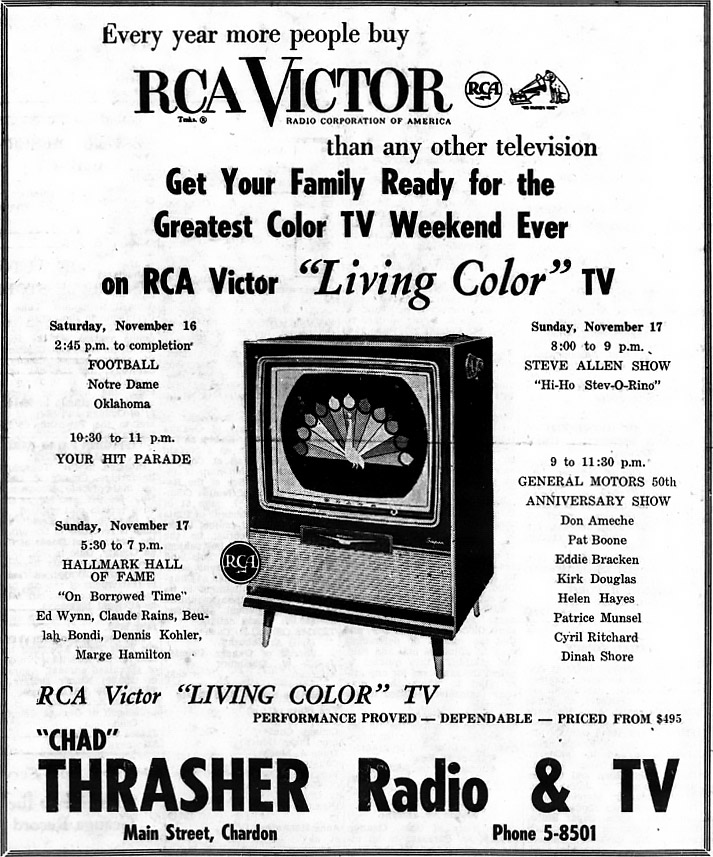Hello, splashy friends and audio adventurers! It’s your host, Finnley the Dolphin, diving into another episode of Finnley’s Audio Adventures. Today, I’m whisking you away to a spectacular celebration of technology and talent that made waves back in 1959—the General Motors 50th Anniversary Show. Imagine a world just discovering the vibrant colors of television and the magic of high-fidelity sound. This episode is not just about cars; it’s about stepping into an era where entertainment and technology intersect in dazzling ways. So, grab your snorkels and let’s plunge into this ocean of historical audiovisual treasures. Don’t forget to hit that subscribe button and ring the bell so you won’t miss any of our underwater journeys into the world of bizarre and wonderful sounds!
Hosted by Kirk Douglas and Ernest Borgnine, “The General Motors 50th Anniversary Show” was not just a celebration of automotive milestones but a vibrant showcase of the era’s emerging color television technology. Broadcast in 1959 during a period marked by burgeoning consumer interest in color TV, the show captivated an audience eager to witness this novel medium. Featuring a star-studded lineup including Don Ameche, Pat Boone, and Dinah Shore, the show was a brilliant spectacle of color and sound, ideally timed to be advertised alongside RCA Victor’s new “Living Color” TVs.

The popularity of this special can be attributed to several factors. The allure of color television was immense; it transformed the viewing experience by bringing vivid, lifelike images into living rooms. This novelty made the broadcast a must-watch event as viewers could see their favorite celebrities in color for the first time, enhancing the overall appeal and making the experience unforgettable. Additionally, the show itself was a celebration of American industry and progress, themes that resonated deeply with a post-war audience optimistic about technological advancement and national prosperity.
One of the show’s highlights was Pat Boone’s performance in “The Sad Lover,” where he sang “Where Are You?” against a lively Mardi Gras backdrop, perfectly embodying the theme of searching for joy and connection amidst celebration. The program also featured a variety of comedic sketches that brought lightness and humor to the pursuit of happiness. Eddie Bracken, Hans Conried, Alice Ghostley, and Dennis Joel starred in “Poor Charlie: the Book Store,” turning a mundane bookstore setting into a scene of delightful misadventures. Another sketch, “Past and Future,” featured Dan Dailey, Carol Burnett, Steve Lawrence, and Chita Rivera in a vibrant song and dance routine that blended nostalgia with a comedic outlook on what the future might hold.
On the dramatic side, “The Bridge,” performed by Cyril Ritchard and Claudia Crawford, beautifully captured the essence of the show’s theme by exploring deeper interpersonal connections through the song “Mutual Admiration Society.” This performance not only highlighted the actors’ theatrical prowess but also the emotional depth that music and drama can bring to themes of love and mutual respect.
These performances, masterfully woven together by the direction of Douglas and Borgnine, created a show that was not just about entertainment but also a reflection on the different ways happiness manifests in our lives.
Bernard Green, as the conductor for the General Motors 50th Anniversary Show, played a crucial role in shaping the production’s musical identity. His adept handling of the orchestra brought a vibrant and dynamic score to life, which was essential in encapsulating the celebratory spirit of this milestone event. His profound influence on the show’s music helped create memorable moments that resonated with the audience, blending seamlessly with the varied performances and themes presented throughout the special.
Green’s career was characterized by remarkable versatility and a deep-seated passion for music. Before his involvement with the General Motors special, he had already established himself as a formidable figure in the world of television music. He was well-regarded for his work on popular shows such as “Caesar’s Hour” and “Mr. Peepers,” where he demonstrated his ability to enhance the narrative and emotional appeal of television through his musical compositions. His work not only appealed to audiences but also significantly influenced the way music was integrated into television programming.
Throughout his career, Bernard Green was known for his ability to conduct a wide range of musical styles, from classical arrangements to contemporary pieces, which made him a valued conductor in the television industry. His skill in orchestrating complex musical pieces was evident in the General Motors 50th Anniversary Show, where he managed to highlight the emotional undertones of each segment, thereby enhancing the overall impact of the performances.
Bernard Green’s contribution to the General Motors 50th Anniversary Show was not just in conducting music but in crafting an auditory experience that complemented the visual spectacle. His understanding of how music could amplify the storytelling made the show a richer, more engaging experience for viewers. By integrating thoughtful musical selections and orchestrations that reflected the themes of happiness and celebration, Green helped set a high standard for future musical directions in television.
In conjunction with the celebration, an album featuring performances from the special was released on RCA Victor. This record was produced using RCA Victor’s “New Orthophonic” high fidelity recording technology. Introduced in the mid-1950s, this advanced sound recording technology aimed to capture audio with unprecedented clarity and richness, closely mimicking live performance quality. The “New Orthophonic” system featured enhancements that minimized distortions and noise common in earlier recordings, thus providing clearer, more dynamic audio that could convey a wider range of tones and nuances.

For an album like the General Motors 50th Anniversary special, the clarity and depth of “New Orthophonic” recording meant that every musical detail, from the softest note of a violin to the booming voice of a singer, was captured with lifelike quality. This recording technology not only enhanced the listening experience but also marked a significant step forward in the commercial recording industry, setting a new standard for audio recordings and influencing how music and performances were captured and enjoyed.

The popularity of this album was noted in publications like the Evening Star, which featured an article on November 1, 1959, by James G. Deane, the Star Record Critic. Deane highlighted the album in his column, noting its exceptional quality and its role in bringing the experience of the TV special into homes across America. The mention of the record in such a respected newspaper not only reinforces its significance but also underscores the widespread acclaim it received upon release.
The release of this album played a crucial role in extending the life of the special beyond its initial broadcast, making it a lasting piece of cultural memorabilia that allowed audiences to revisit the magic of the event in the comfort of their own homes. This record not only served as a keepsake from a major television event but also as a benchmark in the quality of recorded sound, offering audiences a way to experience high fidelity sound reproduction that was as close to the original performance as possible.
Wow, what an electrifying swim through history with the General Motors 50th Anniversary Show! From the radiant hues of early color TV to the resonant tones of “New Orthophonic” high fidelity sound, it’s clear that this event was more than just a celebration—it was a milestone in multimedia entertainment. As we surface from this deep dive, I hope you’re feeling as inspired as I am by how creativity and technology can come together to create something truly memorable. Thanks for joining me, Finnley the Dolphin, on this audiovisual adventure. Remember to keep swimming through our waves of episodes, and I’ll catch you on the next current of Finnley’s Audio Adventures. Swim fast, laugh often, and stay curious, my fin-tastic friends!
Sources Used:
Evening star. [volume] (Washington, D.C.), 01 Nov. 1959. Chronicling America: Historic American Newspapers. Lib. of Congress. https://chroniclingamerica.loc.gov/lccn/sn83045462/1959-11-01/ed-1/seq-58/
Geauga record. [volume] (Chardon, Geauga County, Ohio), 14 Nov. 1957. Chronicling America: Historic American Newspapers. Lib. of Congress. https://chroniclingamerica.loc.gov/lccn/sn84028102/1957-11-14/ed-1/seq-13/
"Bernard Green, Composer Dead; Conductor and Arranger for 40 Years Was 66". The New York Times, August 10, 1975. https://www.nytimes.com/1975/08/10/archives/bernard-green-composer-dead-conductor-and-arranger-for-40-years-was.html
Various - The 50th Anniversary Show on Discogs. https://www.discogs.com/release/18065521-Various-The-50th-Anniversary-Show
IMDB - The General Motors 50th Anniversary Show. https://www.imdb.com/title/tt0774760/plotsummary/